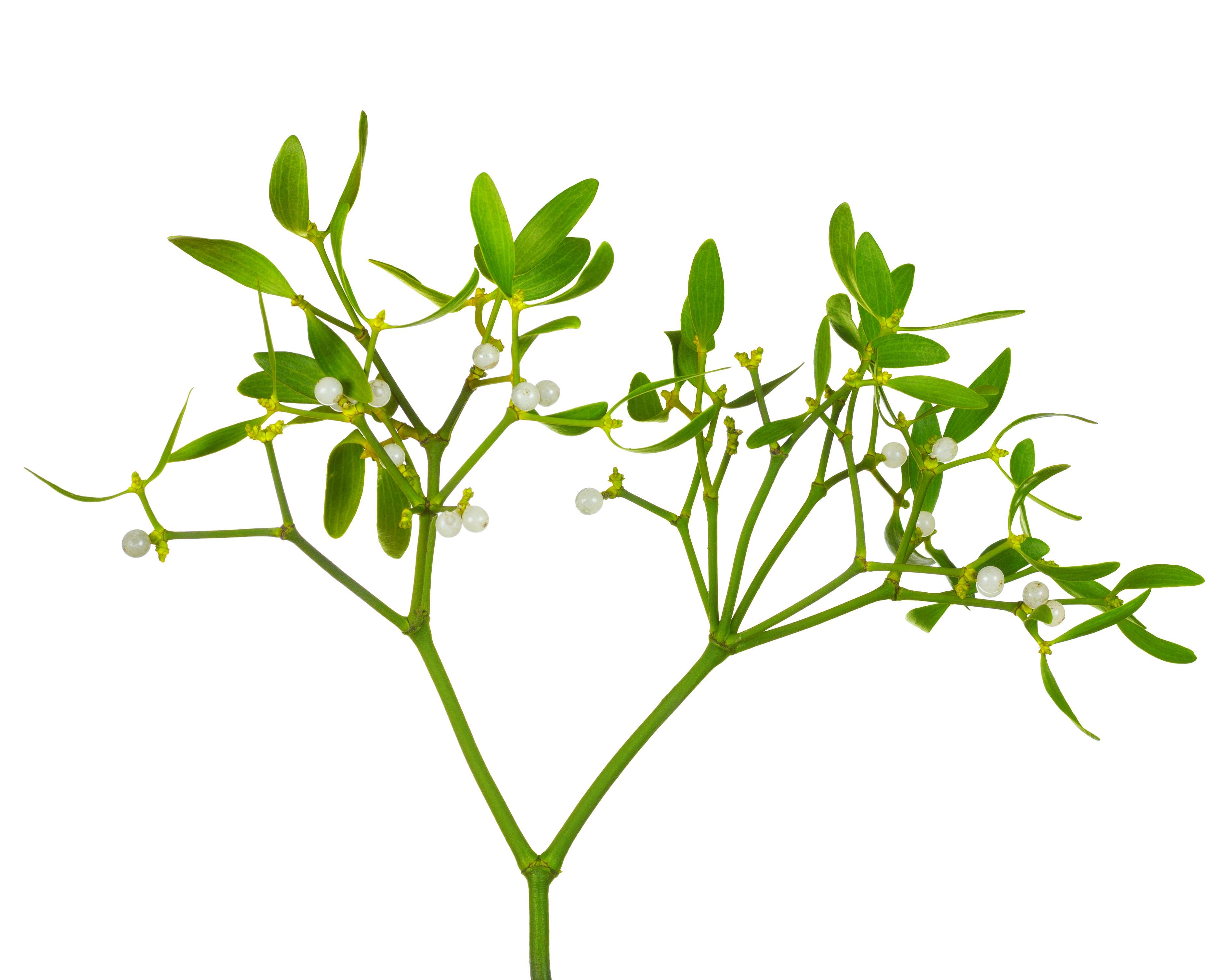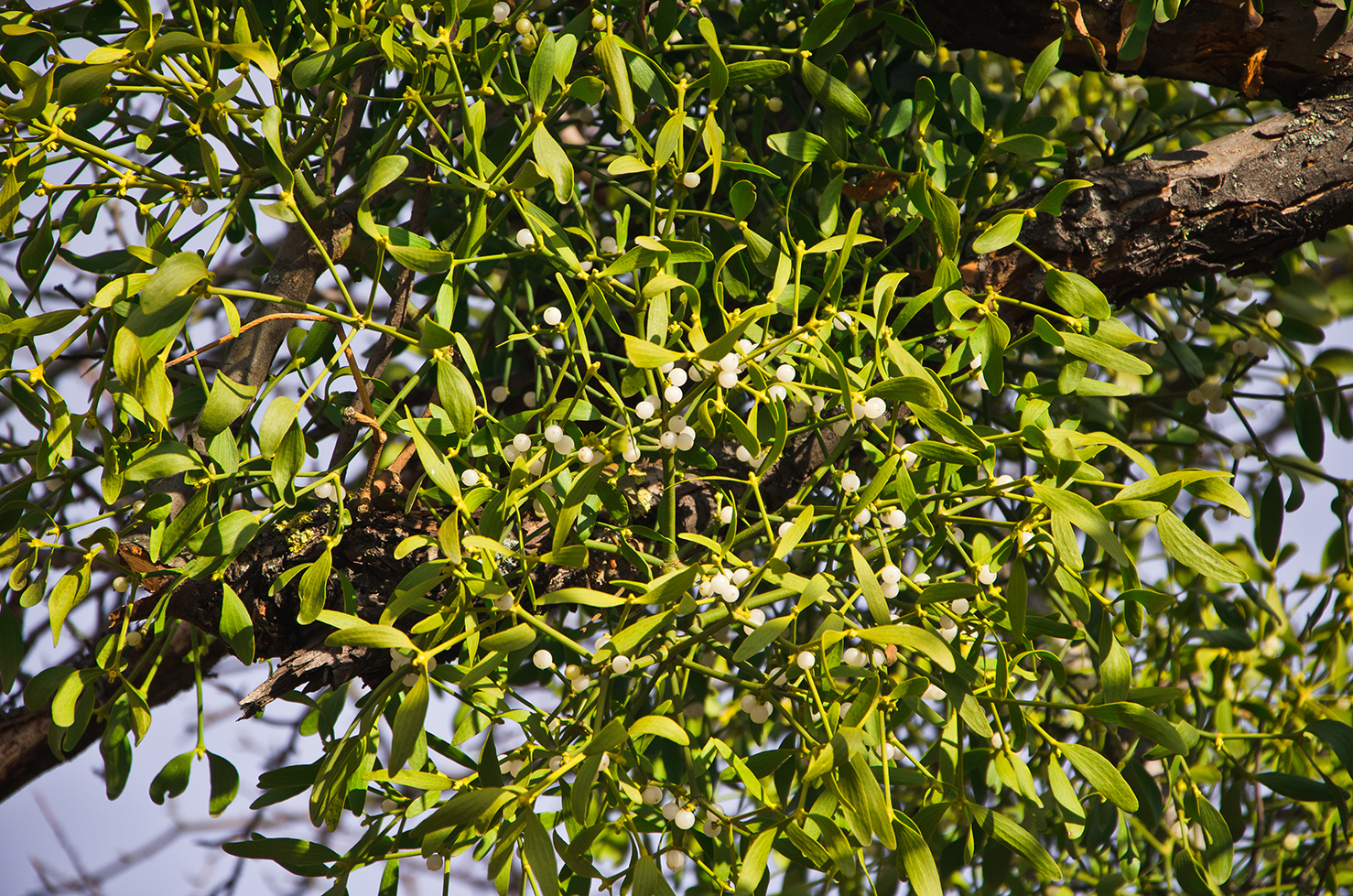Remember the mistletoe!
Danish researchers have discovered that mitochondria from mistletoe contain only 10 genes. This discovery will ultimately lead to a better understanding of how mitochondria function and not least how the interaction between parasite and host functions. This discovery could be very important if we can use the knowledge to fight the massive loss of crops caused by mistletoe species in, for example, Southern Europe and a number of tropical countries.


All cells of higher plants contain mitochondria, which act as the cell's power station and biochemical factory. Mitochondria appeared about 1.5 billion years ago as the result of a symbiosis between a bacterium that was engulfed by another type of bacterium. In the beginning, the mitochondria therefore had a complete set of bacterial genes (DNA), but this has since been greatly simplified in part by the transfer of genes to the nucleus of the host organism. In parallel, there has been a specialization of the "guest’s" metabolism, so that it has gradually become integrated into the host’s metabolism.
In most higher plants, 50-70 genes are left in the mitochondrial DNA (or that was what the Danish researchers thought before they tackled mistletoe) that encodes the 30-40 proteins that are mainly needed for energy metabolism. The remaining 20-30 genes encode some RNA molecules to be used in protein synthesis, which the mitochondria still perform. All this means that more than 95% of the proteins that mitochondria need to function are encoded in the nuclear DNA, synthesized outside the mitochondria and imported.
Danish researchers from the University of Copenhagen and Aarhus University have now discovered that mitochondria from the European mistletoe (Viscum alba) and two other species of mistletoe contain only 10 genes. And even the remaining genes are so changed that it is doubtful whether they are functional.
There are two possible explanations for this.
One possibility is that all of the protein-encoding genes have been transferred to the cell nucleus where they are functional so that their products can now be synthesized outside the mitochondria and imported together with all the other mitochondrial proteins. It is a kind of a status quo, and scientists do not know what could be the reason for such a massive gene transfer.
The other possibility, namely that all of the missing genes have simply been lost, is very exciting and opens up new perspectives for how parasitic plants have adapted to the 'luxurious living' it is to have a large part of its energy, water and minerals delivered - in this case - by its host tree. Without the proteins and RNA molecules that the missing genes encode, the normal energy metabolism of the mitochondria will not work properly. This raises the question of how the mitochondria fulfill their more limited portfolio of tasks, which requires energy, without the normal energy production?
In the long term, these results will probably allow for a more effective fight against parasitic plants, some of which do not even make photosynthesis, but let the host do it all.
The results have been published in Nature Scientific Reports.
For further information, please contact
Associate Professor Ian Max Møller
Department of Molecular Biology and Genetics
Aarhus University, Denmark
ian.max.moller@mbg.au.dk - Mobile: +45 20872100
